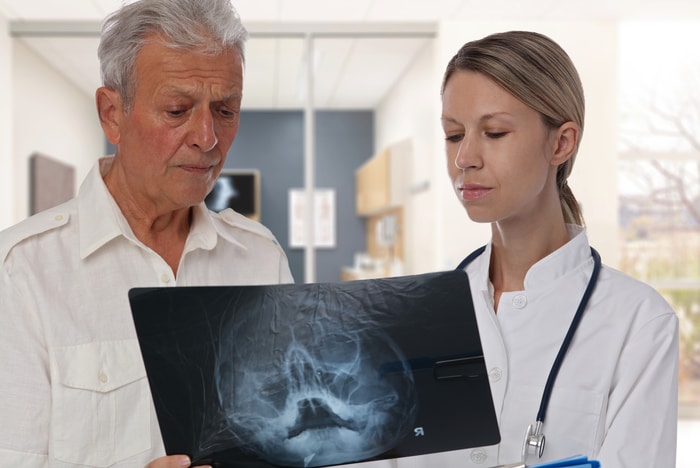
It was the third vehicle crash of the shift. The first two were minor – low-speed fender benders with minor injuries. This one was different: a high-speed impact involving an unrestrained driver. The facial injuries were extensive.
The patient was semi-conscious, but breathing on his own. A C-collar was in place, but the patient was trapped by the steering wheel. He had copious amounts of blood streaming from his nose and mouth. His front teeth had been obliterated by the steering wheel. He began to cough and choke. His airway was obviously in trouble. What to do?
Patients with dental trauma pose significant challenges, especially when they present with possible head injuries. Nasotracheal intubation is out of the question, contraindicated by facial and skull fractures. Oral intubation will be challenging because in this case, the patient was entrapped with extensive trauma to the mouth. Your only alternative in such cases is to rely on your portable suction unit.
Let’s look at the critical role of a portable suction machine when treating patients with dental trauma.
The Human Dentition
Throughout your lifetime, you will go through two sets of teeth. The deciduous, or baby, teeth begin erupting during the first year of life and are replaced as you age by the permanent teeth. There are 20 deciduous teeth—10 on top, 10 on the bottom. As the permanent teeth erupt, they shove the baby teeth out of the jaws, which is why your deciduous teeth fall out. The permanent teeth total 32: 16 on top, 16 on the bottom. And although teeth are the hardest substances in the body, they can still be broken.
The categories of dental trauma include:
- Class 1 - Simple fracture of the crown involving little or no dentin
- Class 2 - Extensive fracture of the crown involving considerable dentin but not the dental pulp
- Class 3 - Extensive fracture of the crown with an exposure of the dental pulp
- Class 4 - Loss of the entire crown
Although the classifications matter little to the rescuer in the field, facial trauma can have serious implications for airway management. Broken and loose teeth pose several threats. They include:
- Inability to seal a mask to the patient's face
- Teeth and fragments becoming airway obstructions
- Aspiration of blood
- Difficulty or inability to intubate
The Role of Suction
In extreme cases of dental trauma, continuous suction, while monitoring the patient’s oxygenation and 02 saturation, may be the only option for maintaining airway patency. Effective suction can achieve:
- Removing bodily fluids
- Preventing active bleeding from entering the trachea
- Removing teeth and tissue from the traumatized airway
- Preventing hypoxia and allowing air movement
- Preventing aspiration of blood and saliva
Getting Ready
Before preparing the patient with dental trauma for suction, you must first prepare your equipment. Equipment prep includes:
- Ensuring your portable suction machine is operational—this begins at shift change
- Checking the batteries by turning the unit on
- Replacing depleted batteries and having extra on hand for long-term suctioning
- Ensuring the unit is clean
- Having all proper accessories in place, including catheters, tubing, and canister
- Selecting the appropriate-sized catheter—think large bore!
- Having backup catheters available, in case of clogs
Once your equipment is ready, prep your patient. The extent of dental trauma will determine your approach. Preparation includes:
- Preoxygenating your patient for at least one minute before suctioning
- Guarding against hypoxia during continuous suctioning—assess 02 saturation at all times
- Using caution in blind suctioning—this can force loose or broken teeth into the back of the pharynx-
- Suctioning with care—avoid overly aggressive suctioning to prevent further trauma
Trauma patients are always a challenge, and when trauma involves dentition, it can pose a significant risk of airway obstruction. Treatment must be tailored to the patient, based on the extent of injuries and the number of teeth involved. Your portable suction machine will play a critical role in managing the airways of patients with dental trauma.
Editor's Note: This blog was originally published in November, 2017. It has been re-published with additional up to date content.

















